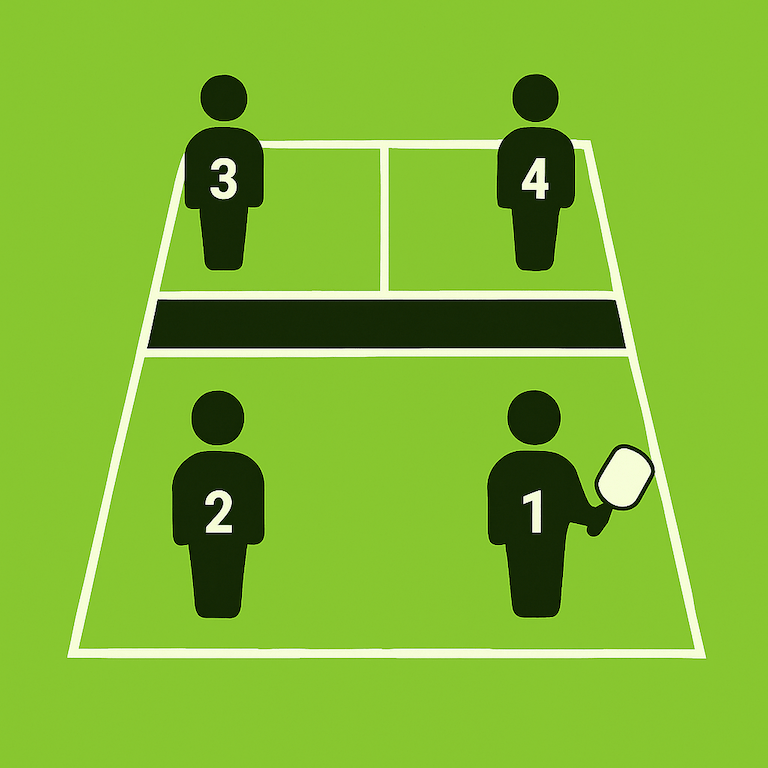Pickleball Scoring System: How It Works (with Examples)

Pickleball scoring can be confusing at first...
Like…really confusing.
And not just "at first." (even veterans get confused).
But don’t worry—we’ll break it all down super simple, and soon you’ll be correcting your opponents (and partners) when they yell the score wrong ;)
First things first: How do you win a game?
Games are typically played to 11 points (sometimes 15 depending on the tournament/league!)
You must win by 2 points.
Only the serving team can score (in traditional scoring).
Let’s dig into the two main types of scoring.
🏆 Traditional Scoring (aka Side-Out Scoring)
This is the OG method, and probably the most common in recreational play.
Only the serving team can score points.
Each side gets two chances to serve (Player 1, then Player 2) before the serve passes to the other team.
When a side loses both serves, it’s called a “side-out.”
Score is called as:
Server’s score – Receiver’s score – Server number (1 or 2)
Example:
Team A gets to serve after Team B "sides out". They're ahead 6-4. The score is...
6-4-1
Team A loses that point. The OTHER (2nd) player on Team A gets to serve. The score is...
6-4-2
They win the point! That same server serves again (though he serves from the other side of the court. The score is...
7-4-2
They lose the point. Side out. Team B gets to serve. The score is...
4-7-1
etc, etc

Rally Scoring
This one’s growing in popularity—especially in faster, tournament-style formats.
Either team can score, whether they’re serving or not.
Still win by 2.
Games go quicker. Less confusion on whose serve it is.
Usually played in leagues or special events (not super common yet in casual play).
Sometimes they'll play to 15, not 11 (since the game goes faster anyways)
Example: If Team A wins the rally (whether serving or not), they get the point. Score goes up. Boom.
Wait… Why Does the Game Start at 0-0-2? (doubles)
This trips up every beginner. At the start of a game, you’ll often hear the score called as:
0 - 0 - 2
That “2” doesn’t mean someone already used their serve—it’s just a rule to prevent the starting team from having an unfair advantage. They only get one serve at the very beginning, not two. After that, the normal two-server rotation kicks in 👍.
Some players will call it 0 - 0 - start instead. Same thing. Both are fine.
Just know: you’re not missing something. That’s how it’s supposed to work.
How to Call the Score (Traditional)
Say your score first (as the server).
Then your opponent’s score.
Then say “1” or “2” depending on which server you are.
Example: You’re serving, your team has 3, opponents have 6, and you’re the second server. Say:
3 - 6 - 2
Common Confusions (You're Not Alone!)
Why is the score sometimes 0-0-2?
At the start of the game, the second server rule kicks in to prevent an advantage. You only get one serve at the start—so it starts at “2.” Wild, right?How do I know if I’m server 1 or 2?
Whoever starts the game on the right side is server 1. You stay that number the entire time—regardless of switching sides.Do I switch sides every point?
Only the serving team switches sides after scoring a point. If you lose a rally or it’s side-out, stay put.
Quick Recap
Games go to 11, win by 2
Traditional = only servers score
Rally = a point is awarded every ralley, regardless of who served
Call score as:
server score - receiver score - server number0-0-2 at the start is normal
Final Thoughts - you got this
Pickleball scoring feels weird at first (annnnnd you'll continue to get confused, even as a veteran)!
Give it a few games.
You’ll get the hang of it. And if not—just pretend like you know what you’re doing. Confidence is 90% of pickleball anyway 😉